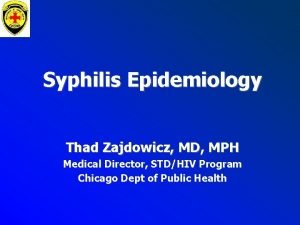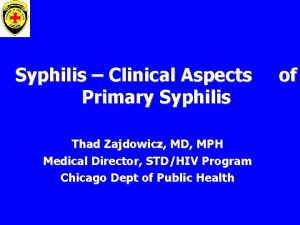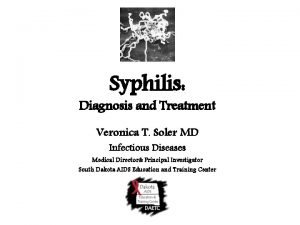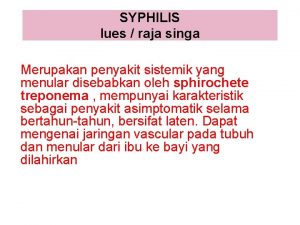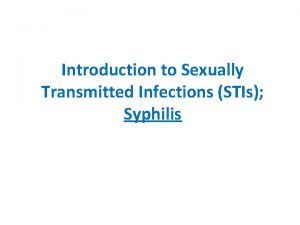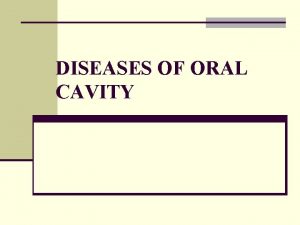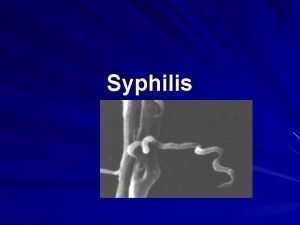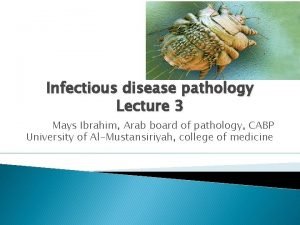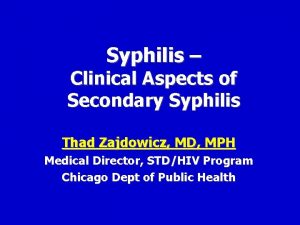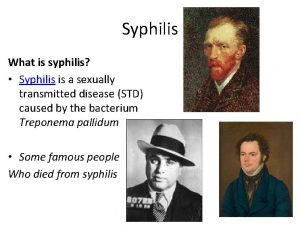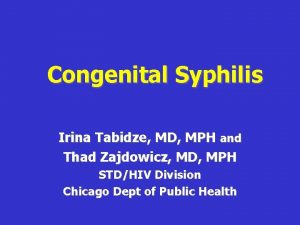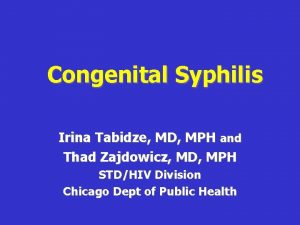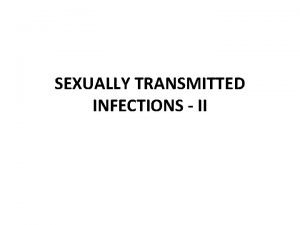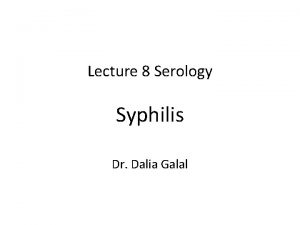Syphilis Clinical Aspects of Secondary Syphilis Thad Zajdowicz





















- Slides: 21

Syphilis – Clinical Aspects of Secondary Syphilis Thad Zajdowicz, MD, MPH Medical Director, STD/HIV Program Chicago Dept of Public Health


Why a lecture on syphilis? Although syphilis is an eminently treatabledisease, its continuing occurrence illustrates that our control efforts still need to be improved. The disease remains elusive clinically even today, and unless thought of and sought for can silently cause disease as it has for centuries. Further, control of syphilis is vital because of its interactions with HIV. This lecture will focus on secondary syphilis.

Objectives • To review the pathogenesis of secondary syphilis • To demonstrate the clinical features of secondary syphilis • To describe nondermatologic features of secondary syphilis

Clinical Stages • Syphilis is conventionally divided into several stages: – Primary – Secondary – Latent – Late, or tertiary • This lecture will focus on secondary syphilis

Natural History of Untreated Syphilis

Progression Into Secondary Syphilis • Secondary syphilis is the most florid stage of syphilis • Systemic infection – Dermatologic findings are most common – However, treponemes infect virtually all tissues • Resolves when host immune response overcomes infection

Histopathology

Secondary Syphilis

Secondary Syphilis

Secondary Syphilis An example of lesions of secondary syphilis on the foot, including the sole.

Secondary Syphilis

Secondary Syphilis

Secondary Syphilis

Condyloma Lata

Mucous Patch

Syphilis - Secondary Manifestation Percent of cases Skin 90 Constitutional 70 Mouth & throat 35 Genital lesions 20 CNS Renal, GI, Rheumatologic 8 -40 Unusual

Constitutional Symptoms • Malaise • Sore throat • Headache • Myalgias • Pruritis

Constitutional Signs • Fever (low-grade) • Weight loss • Lymphadenopathy – Inguinal most common – May be generalized • Periosteal involvement • Hepatitis • Immune complex disease

Conclusions • Secondary syphilis is a systemic disease and is typically florid • Constitutional symptoms and signs are common and may cause diagnostic confusion • Dermatologic findings are typically multiple and florid • The basic pathology is obliterative endarteritis

Sources of Information The following sites are useful if more information on syphilis is sought: www. cdc. gov Centers for Disease Control www. who. int World Health Organization www. ashastd. org American Social Hygiene Association www. vnh. org Virtual Naval Hospital
 Thad zajdowicz
Thad zajdowicz Thad zajdowicz
Thad zajdowicz Thad riley nh
Thad riley nh Keystroke timing
Keystroke timing Fema
Fema K
K Mia smoljan
Mia smoljan Syphilis titer chart
Syphilis titer chart Syphilis diagnostic test
Syphilis diagnostic test The supernatural tradition
The supernatural tradition Hemoagglutination
Hemoagglutination Syphilis titer chart
Syphilis titer chart Iregulair
Iregulair Spirochetales
Spirochetales Pathophysiology of syphilis
Pathophysiology of syphilis Flocculation
Flocculation Oportunne
Oportunne Condyloma lata syphilis
Condyloma lata syphilis Tabes dorsalis
Tabes dorsalis Congenital syphilis triad
Congenital syphilis triad Syphilis morphology
Syphilis morphology Bilhariziasis
Bilhariziasis
